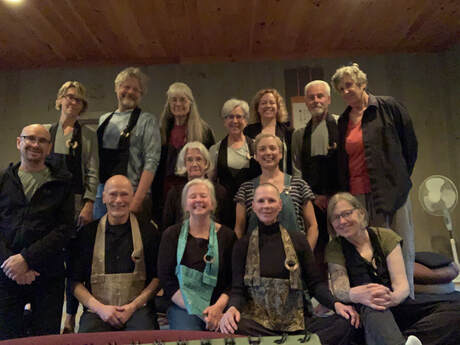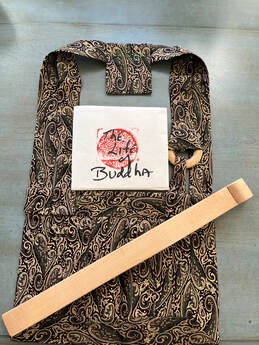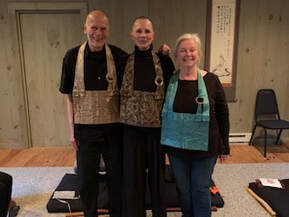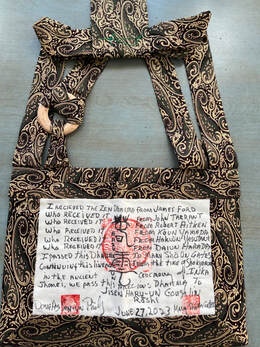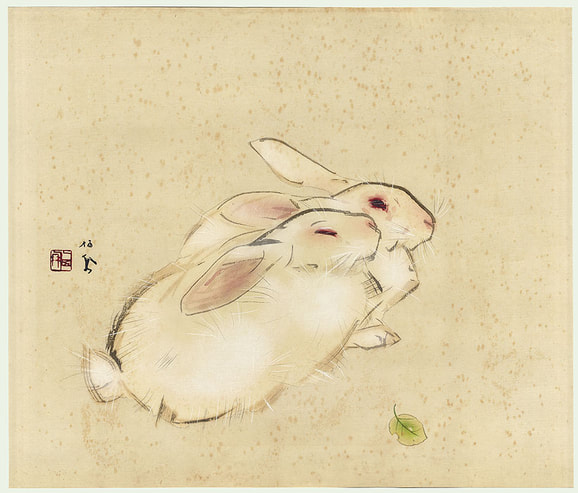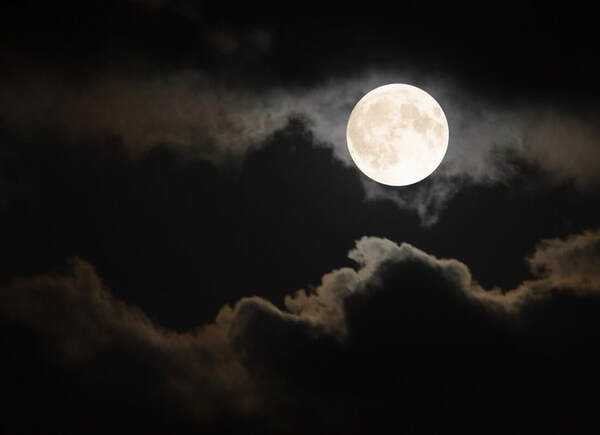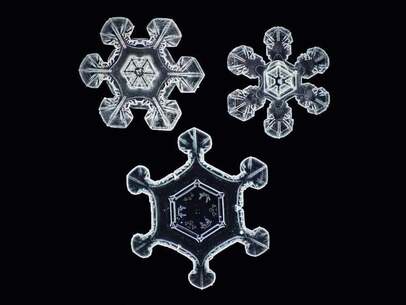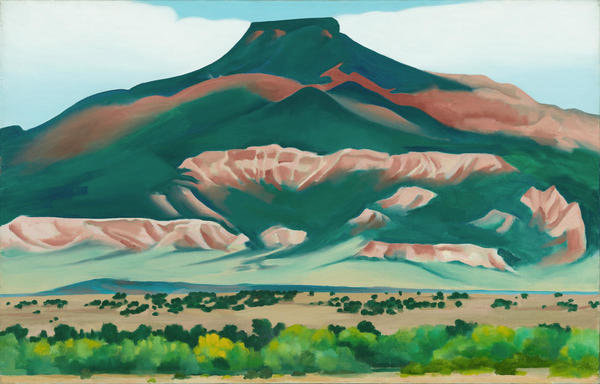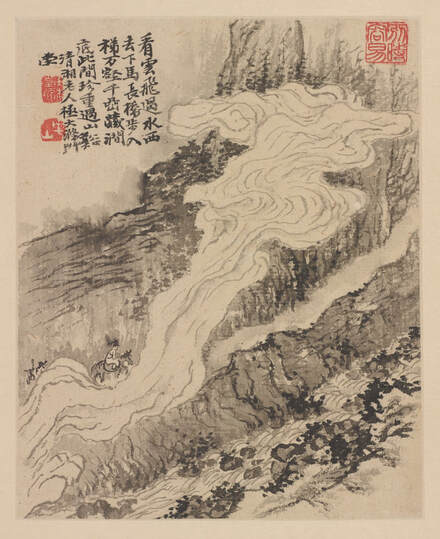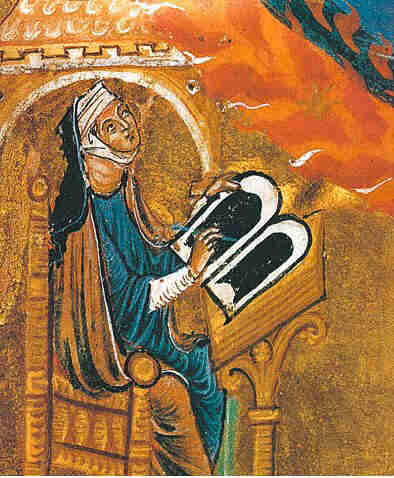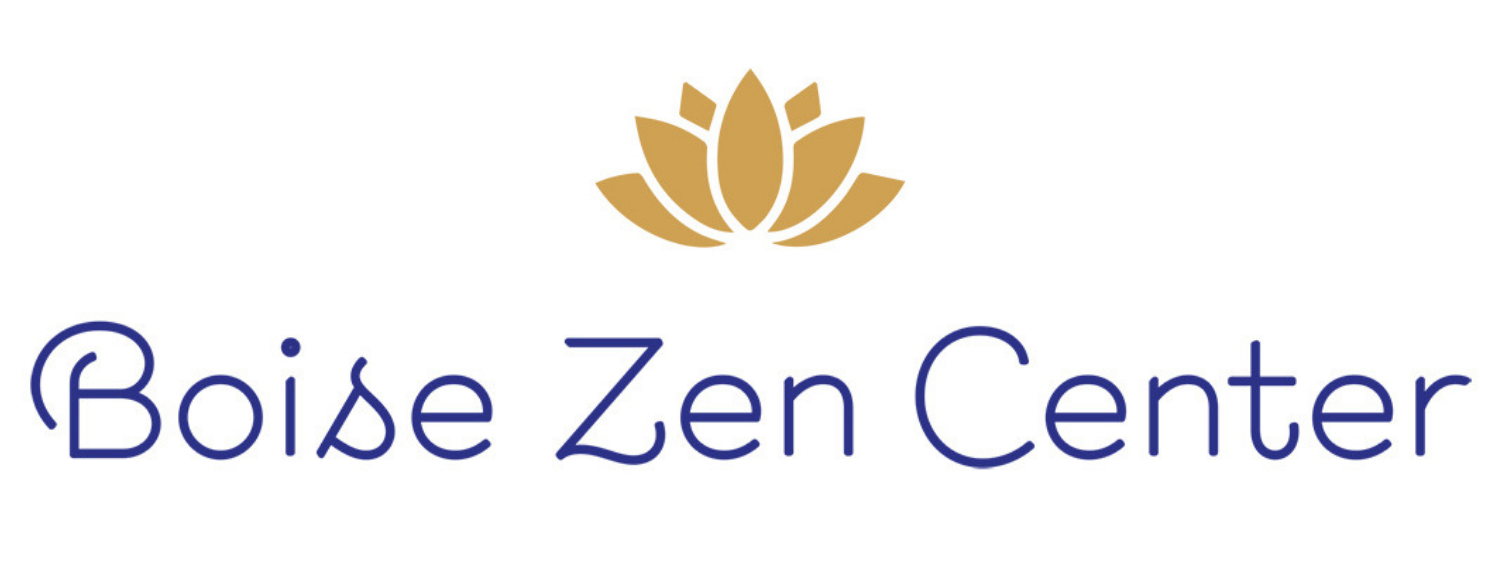Boise Zen Center July/August Newsletter
Empty Sky Sangha West Cornwall, Connecticut
The Ceremony of Inka Shōmei
1st August, 2023
Dear Everyone,
Greetings from Boise, Idaho where the temperatures are expected to be near 100 degrees. The earth is hotter than it has been in thousands of years and the alarm bell is ringing. May we hold close to our hearts all beings who are experiencing dangerous heat.
Through years of practice, I have received a couple of acknowledgments. My Buddhist practice began 1995 at Gampo Abbey with the late Ani Tsultrim Palmo who said, 'Sit with Zen Buddhists, they know how to sit.' In early 1996, I met my root teacher, Rev. Dai-en Bennage Roshi. Each month, I drove four and a half hours to northeast, rural Pennsylvania to practice at Mt. Equity Zendo. In 1997, I was offered the Five Precepts and given the name Myōen, wondrous circle. Shortly after this, Rev. Dai-en suggested that I contact Rev. Nonin Chowaney; his student Rev. Kyoki Robert's was moving to Pittsburgh, PA. Here starts the long journey in Soto Zen.
In 1998, we began establishing the Zen Center of Pittsburgh, a residential temple in the lineage of Dainin Katagiri Roshi. In 2001, I completed the Sixteen Bodhisattva Precepts with the late Rev. Nonin Chowaney followed by Priest Ordination in 2005 with Rev. Kyoki Roberts. I was given the full name Myōen Jisen. Following Priest Ordination, I trained monastically at Shasta Abbey and completed Head Novice Ceremonies in 2009. On June 10, 2012, I received Dharma Transmission from Rev. Kyoki. I left Pennsylvania in 2016, moved to Idaho, and opened the Boise Zen Center in 2017. With Dharma Transmission there is a custom in which a person is confirmed as a successor in an unbroken line of teachers and disciples, a spiritual 'bloodline' going back to Shakyamuni Buddha. This unbroken lineage of teachers is also acknowledged in Rinzai Zen.
On the night of 27th June, I received Inka Shōmei. It means the ‘legitimate seal of clearly furnished proof’ or the “complete acknowledgement of the matter.” The koan journey began in 2012 with my grand-uncle in the Dharma, Dosho Port Roshi. Dosho led me to complete the Harada-Yasatani curriculum with my two Masters, Douglas Phillips Roshi and Mary Gates Roshi, head teachers at Empty Sky Sangha. These are relationships that have endured nearly ten years. I received transmission and am honored to call them my teachers and now peers.
During the Ceremony, I received this Rakusu, and Kotsu, also called a Nyoi. The rice paper wrapped document is the official authorization and coincided with a public ceremony. They gave me the name Haru-un, Spring cloud. With that said, the Empty Gate Sangha was present during this wondrous evening. I'm deeply grateful to everyone.
Lastly and most heartfelt, I'd like to thank Rachel Boughton, Abbess of Flower Mountain Zen; she is my long term mentor and teacher on this koan adventure. We formed a sisterhood between BZC and FMZ in 2021. I have left out countless names of so many that guided me on this journey including my students, numerous Sangha members, and family. To each of you, thank you! It's important to have good friends in the Dharma.
With countless bows,
Jisen, Head Teacher and Practitioner BZC
Empty Sky Sangha West Cornwall, Connecticut
The Ceremony of Inka Shōmei
1st August, 2023
Dear Everyone,
Greetings from Boise, Idaho where the temperatures are expected to be near 100 degrees. The earth is hotter than it has been in thousands of years and the alarm bell is ringing. May we hold close to our hearts all beings who are experiencing dangerous heat.
Through years of practice, I have received a couple of acknowledgments. My Buddhist practice began 1995 at Gampo Abbey with the late Ani Tsultrim Palmo who said, 'Sit with Zen Buddhists, they know how to sit.' In early 1996, I met my root teacher, Rev. Dai-en Bennage Roshi. Each month, I drove four and a half hours to northeast, rural Pennsylvania to practice at Mt. Equity Zendo. In 1997, I was offered the Five Precepts and given the name Myōen, wondrous circle. Shortly after this, Rev. Dai-en suggested that I contact Rev. Nonin Chowaney; his student Rev. Kyoki Robert's was moving to Pittsburgh, PA. Here starts the long journey in Soto Zen.
In 1998, we began establishing the Zen Center of Pittsburgh, a residential temple in the lineage of Dainin Katagiri Roshi. In 2001, I completed the Sixteen Bodhisattva Precepts with the late Rev. Nonin Chowaney followed by Priest Ordination in 2005 with Rev. Kyoki Roberts. I was given the full name Myōen Jisen. Following Priest Ordination, I trained monastically at Shasta Abbey and completed Head Novice Ceremonies in 2009. On June 10, 2012, I received Dharma Transmission from Rev. Kyoki. I left Pennsylvania in 2016, moved to Idaho, and opened the Boise Zen Center in 2017. With Dharma Transmission there is a custom in which a person is confirmed as a successor in an unbroken line of teachers and disciples, a spiritual 'bloodline' going back to Shakyamuni Buddha. This unbroken lineage of teachers is also acknowledged in Rinzai Zen.
On the night of 27th June, I received Inka Shōmei. It means the ‘legitimate seal of clearly furnished proof’ or the “complete acknowledgement of the matter.” The koan journey began in 2012 with my grand-uncle in the Dharma, Dosho Port Roshi. Dosho led me to complete the Harada-Yasatani curriculum with my two Masters, Douglas Phillips Roshi and Mary Gates Roshi, head teachers at Empty Sky Sangha. These are relationships that have endured nearly ten years. I received transmission and am honored to call them my teachers and now peers.
During the Ceremony, I received this Rakusu, and Kotsu, also called a Nyoi. The rice paper wrapped document is the official authorization and coincided with a public ceremony. They gave me the name Haru-un, Spring cloud. With that said, the Empty Gate Sangha was present during this wondrous evening. I'm deeply grateful to everyone.
Lastly and most heartfelt, I'd like to thank Rachel Boughton, Abbess of Flower Mountain Zen; she is my long term mentor and teacher on this koan adventure. We formed a sisterhood between BZC and FMZ in 2021. I have left out countless names of so many that guided me on this journey including my students, numerous Sangha members, and family. To each of you, thank you! It's important to have good friends in the Dharma.
With countless bows,
Jisen, Head Teacher and Practitioner BZC
Liz Fox, a master of Zen clothing, made the Rakusu. Daniel Terragno Roshi, Rocks and Clouds Zendo created the kotsu. Many thanks for these exquisite, handmade gifts. Front row left to right: Doug Phillips; Mary Gates; Jisen Coghlan and the practitioners of Empty Sky Sangha.
6th January, 2023
Wolf Moon 4:08 pm mst
Dear All,
Happy New Year, the year of the Water Rabbit. This Year embodies yin, 陰, the symbol of femininity, darkness, mystery and moon. It is present in valleys and streams and may manifest as ease. fluidity, stillness, and contemplation. In the Chinese zodiac, this Year represents 'hope'. Though what does this mean? What part of us is searching and for what?
During the past year, countless of you have written to me, hoping to come to BZC. You wrote about intentions, dreams, and past experiences. And yet, very few ever came and I'm wondering what keeps you from walking in the door. Indeed, it's difficult to come to a new place, begin meditating and practicing with a teacher and others you've never met. Perhaps you've practiced elsewhere and it wasn't what you were looking for.
It's not easy starting something new or reigniting something you've done in the past. I cordially invite each of you who have written to me this past year to come to BZC. Come just once and see what it is you're hoping to find. I promise it will be right under your seat.
Finally, I want to thank all of you for supporting the Zen Center during 2022. Each of you make a difference and keep the doors open for everyone who comes either in person or via the virtual platform, Zoom.
I hope you will consider joining us for meditation:
Tuesday-Friday mornings: 7:00-8:10am
Tuesday evenings 6:00-7:10pm
Saturday mornings: 8:00-9:10am
Best wishes for the New Year,
Jisen, Head Teacher and Practitioner
Rabbits by Takeuchi Seiho 1864-1942
Wolf Moon 4:08 pm mst
Dear All,
Happy New Year, the year of the Water Rabbit. This Year embodies yin, 陰, the symbol of femininity, darkness, mystery and moon. It is present in valleys and streams and may manifest as ease. fluidity, stillness, and contemplation. In the Chinese zodiac, this Year represents 'hope'. Though what does this mean? What part of us is searching and for what?
During the past year, countless of you have written to me, hoping to come to BZC. You wrote about intentions, dreams, and past experiences. And yet, very few ever came and I'm wondering what keeps you from walking in the door. Indeed, it's difficult to come to a new place, begin meditating and practicing with a teacher and others you've never met. Perhaps you've practiced elsewhere and it wasn't what you were looking for.
It's not easy starting something new or reigniting something you've done in the past. I cordially invite each of you who have written to me this past year to come to BZC. Come just once and see what it is you're hoping to find. I promise it will be right under your seat.
Finally, I want to thank all of you for supporting the Zen Center during 2022. Each of you make a difference and keep the doors open for everyone who comes either in person or via the virtual platform, Zoom.
I hope you will consider joining us for meditation:
Tuesday-Friday mornings: 7:00-8:10am
Tuesday evenings 6:00-7:10pm
Saturday mornings: 8:00-9:10am
Best wishes for the New Year,
Jisen, Head Teacher and Practitioner
Rabbits by Takeuchi Seiho 1864-1942
It's said that a Wolf Moon offers greater opportunity for reflection.
12th December, 2022
Shasta Abbey retreat
Layman Pang was leaving the temple. Several friends came to see him off at the gate. Pang pointed to the snow falling through the air and said, “Beautiful snowflakes! They don’t fall in that other place.”
I arrived at Shasta Abbey nearly ten days ago. The weather forecast intermittently sends out Winter Weather Warnings though the predictions often add up to a few inches. Today, it is snowing steadily and the grounds are covered in a deep blanket. It feels good to open the Blue Cliff Record and visit with Xuedou again; I came across Layman Pang’s Good Snowflakes. Also, It’s lovely to just sit and see falling snow.
Seeing all this snow got me wondering about science and snowflakes. In the 1800’s, a Vermont farmer, Wilson Bentley, began photographing single, microscopic snowflakes, thus becoming a pioneer in ‘photomicrography.’ It’s said he would stand for hours waiting to catch a single flake with a feather then delicately transfer it to the lens. Coincidentally, he’s called the father of “no two snowflakes are the same”. And ironically, he died of pneumonia after traveling by foot through a blizzard.
Shasta Abbey retreat
Layman Pang was leaving the temple. Several friends came to see him off at the gate. Pang pointed to the snow falling through the air and said, “Beautiful snowflakes! They don’t fall in that other place.”
I arrived at Shasta Abbey nearly ten days ago. The weather forecast intermittently sends out Winter Weather Warnings though the predictions often add up to a few inches. Today, it is snowing steadily and the grounds are covered in a deep blanket. It feels good to open the Blue Cliff Record and visit with Xuedou again; I came across Layman Pang’s Good Snowflakes. Also, It’s lovely to just sit and see falling snow.
Seeing all this snow got me wondering about science and snowflakes. In the 1800’s, a Vermont farmer, Wilson Bentley, began photographing single, microscopic snowflakes, thus becoming a pioneer in ‘photomicrography.’ It’s said he would stand for hours waiting to catch a single flake with a feather then delicately transfer it to the lens. Coincidentally, he’s called the father of “no two snowflakes are the same”. And ironically, he died of pneumonia after traveling by foot through a blizzard.
Wilson “Snowflake” Bentley (1865-1931)
In the story, Layman Pang points to the snow falling through the air and says, “Beautiful snowflakes! They don’t fall in that other place.” Some commentators say the last words are extra. I think the trap was set for the traveler’s question, “Where do they fall?” Here is an invitation to show that place, right here, now. What will you do? Where is that other place?
When I was a child in Pittsburgh, we had cold winters with lots of snow. During holiday and weekends, we would play outside for hours making snow angles; building forts and throwing snowballs with such force to knock each other over and declare victory. I even spent endless hours carving creatures out of misshapen crystals after shoveling the driveway. This is a way to see this koan.
Please join us for meditation in-person or on Zoom.
7:00-8:10am Tuesday-Friday morning
6:00-7:10pm Tuesday evening
8:00-9:10am Saturday morning
Meditation on Saturday, 17th December in-person only
I return Tuesday evening, 20th December and look forward to seeing everyone.
warm regards and bows,
Jisen
When I was a child in Pittsburgh, we had cold winters with lots of snow. During holiday and weekends, we would play outside for hours making snow angles; building forts and throwing snowballs with such force to knock each other over and declare victory. I even spent endless hours carving creatures out of misshapen crystals after shoveling the driveway. This is a way to see this koan.
Please join us for meditation in-person or on Zoom.
7:00-8:10am Tuesday-Friday morning
6:00-7:10pm Tuesday evening
8:00-9:10am Saturday morning
Meditation on Saturday, 17th December in-person only
I return Tuesday evening, 20th December and look forward to seeing everyone.
warm regards and bows,
Jisen
17th May, 2022
Clear sky, windy gusts
Altitude 6,080'
Dear Everyone,
During a winter morning just before going to meditation, I read an article in the Washington Post about the Monastery of Christ in the Desert in Abiquiu, New Mexico. During Covid, they had been closed for over two years and were reopening in 2022. Not remembering when I had been on a personal retreat, I decided it was an opportunity to come to the southwest. I'm residing here for two weeks before returning home to Idaho on the 27th May.
I'm seeing how each of us came here for some reason, for something. I met a doctor who said he's come for clarity; he's about to take on a daunting responsibility. Two women said they come for peace, quietude and beauty. A diocesan priest came to rest, and restore after a busy Easter season. A man said he feels lost... Even I came for something.
I came for silence and 'the wild'. The wild goes on everywhere no matter where we are. Here the landscape is not pristine. There are: Douglas-fir, ponderosa pine blue spruce and aspen; wrens, nuthatches, creepers, and humming birds; towering rock formations; muddy waters; rattlesnakes, tarantulas, lizards, centipedes, scorpions, mice, kangaroo rats, skunks, coyotes, great horned owls, cotton tail and jack rabbits, hawks, eagles, and bob cats.
There's a familiar sound of wind in the pines especially at high altitudes. It's particularly audible in remote places such as this. Silence as presence is in full display. How does silence allow us to know who we are? Did we come to meditation to find precisely who we are?
Here in the high desert, we're in the company of Benedictine monks. They live a life of prayer and follow the Rule of Benedict. There is a dialogue in the Benedictine teachings that goes like this. A monk asked the teacher for 'a good word', 'I can't remember why I came here'. The teacher said, 'Go sit in your cell, and your cell will teach you everything.'
In meditation we experience the silence that becomes stillness. We move into what is arising and then something opens. And if our hearts tell us that silence teaches us everything, do we remember that each of us all together, came here to wake up?
warm regards,
Jisen
Cerro pedernal Georgia O'Keefe Abiquiu, New Mexico
This narrow mesa is the westernmost part of the Jémez Mountains
Clear sky, windy gusts
Altitude 6,080'
Dear Everyone,
During a winter morning just before going to meditation, I read an article in the Washington Post about the Monastery of Christ in the Desert in Abiquiu, New Mexico. During Covid, they had been closed for over two years and were reopening in 2022. Not remembering when I had been on a personal retreat, I decided it was an opportunity to come to the southwest. I'm residing here for two weeks before returning home to Idaho on the 27th May.
I'm seeing how each of us came here for some reason, for something. I met a doctor who said he's come for clarity; he's about to take on a daunting responsibility. Two women said they come for peace, quietude and beauty. A diocesan priest came to rest, and restore after a busy Easter season. A man said he feels lost... Even I came for something.
I came for silence and 'the wild'. The wild goes on everywhere no matter where we are. Here the landscape is not pristine. There are: Douglas-fir, ponderosa pine blue spruce and aspen; wrens, nuthatches, creepers, and humming birds; towering rock formations; muddy waters; rattlesnakes, tarantulas, lizards, centipedes, scorpions, mice, kangaroo rats, skunks, coyotes, great horned owls, cotton tail and jack rabbits, hawks, eagles, and bob cats.
There's a familiar sound of wind in the pines especially at high altitudes. It's particularly audible in remote places such as this. Silence as presence is in full display. How does silence allow us to know who we are? Did we come to meditation to find precisely who we are?
Here in the high desert, we're in the company of Benedictine monks. They live a life of prayer and follow the Rule of Benedict. There is a dialogue in the Benedictine teachings that goes like this. A monk asked the teacher for 'a good word', 'I can't remember why I came here'. The teacher said, 'Go sit in your cell, and your cell will teach you everything.'
In meditation we experience the silence that becomes stillness. We move into what is arising and then something opens. And if our hearts tell us that silence teaches us everything, do we remember that each of us all together, came here to wake up?
warm regards,
Jisen
Cerro pedernal Georgia O'Keefe Abiquiu, New Mexico
This narrow mesa is the westernmost part of the Jémez Mountains
'Since the virtues of the mountain are high and broad, the spiritual power to ride the clouds is always mastered from the mountains, and the marvelous ability to follow the wind is inevitably liberated from the mountains.' Dōgen 1200-1253
21th April, 2021
Dear Everyone,
In the last year of Shitao's life, he painted 'Riding the Clouds.' Most likely this is Mount Huang with peaks more that 3,250 feet high and the Xin'an River below with its headwaters in the Yellow Mountains. Here the clouds appear above the mountain peaks and swirl beyond the ridge line with the river flowing below. The painting feels mysterious and magical. There is little empty space; our eye is drawn to the interior landscape where someone on horseback is riding the boundless blanket of clouds.
Her body similar in texture and color to the mountain landscape; it feels like she is riding on water. Beginning to reread Dogen's Mountains and Waters Sutra, I remembered seeing this painting. They seem to go hand in hand, compliment each other, and both speaking an eternal language. Dogen’s words aren't about mountains and rivers, they are mountains, rivers, clouds, horse, pines, the wind. Shitao’s life, beleaguered with unbearable difficulties, speaks a language that knits together with Dogen's writing-a life practice of paintings, calligraphy and poetry.
Perhaps it’s a good time to ask—Where is the mountain? Who travels the clouds? Last fall when climbing the steep peak at Boundary Creek in Stanley, Idaho and reaching a height at which I could no longer go beyond, I looked out across the valley toward the Sawtooth Range and said, ‘There are the mountains.’ Now I’m reminded of a passage in John Daido Loori’s book, The Way of Mountains and Rivers. Someone exclaimed, ‘Oh, there’s the mountain!’ Daido Roshi said, ‘That’s not the mountain.’ From the misty vista, there I was, riding the clouds, following the wind, and going everywhere. The moment the mountains and rivers manifest the great way, the Tao, we are mountains and rivers.
bowing from Idaho,
Jisen
Reminiscences of Nanjing: Riding the Clouds by Stone Wanderer(1642-1707)| Freer Gallery of Art & Arthur M. Sackler Gallery
21th April, 2021
Dear Everyone,
In the last year of Shitao's life, he painted 'Riding the Clouds.' Most likely this is Mount Huang with peaks more that 3,250 feet high and the Xin'an River below with its headwaters in the Yellow Mountains. Here the clouds appear above the mountain peaks and swirl beyond the ridge line with the river flowing below. The painting feels mysterious and magical. There is little empty space; our eye is drawn to the interior landscape where someone on horseback is riding the boundless blanket of clouds.
Her body similar in texture and color to the mountain landscape; it feels like she is riding on water. Beginning to reread Dogen's Mountains and Waters Sutra, I remembered seeing this painting. They seem to go hand in hand, compliment each other, and both speaking an eternal language. Dogen’s words aren't about mountains and rivers, they are mountains, rivers, clouds, horse, pines, the wind. Shitao’s life, beleaguered with unbearable difficulties, speaks a language that knits together with Dogen's writing-a life practice of paintings, calligraphy and poetry.
Perhaps it’s a good time to ask—Where is the mountain? Who travels the clouds? Last fall when climbing the steep peak at Boundary Creek in Stanley, Idaho and reaching a height at which I could no longer go beyond, I looked out across the valley toward the Sawtooth Range and said, ‘There are the mountains.’ Now I’m reminded of a passage in John Daido Loori’s book, The Way of Mountains and Rivers. Someone exclaimed, ‘Oh, there’s the mountain!’ Daido Roshi said, ‘That’s not the mountain.’ From the misty vista, there I was, riding the clouds, following the wind, and going everywhere. The moment the mountains and rivers manifest the great way, the Tao, we are mountains and rivers.
bowing from Idaho,
Jisen
Reminiscences of Nanjing: Riding the Clouds by Stone Wanderer(1642-1707)| Freer Gallery of Art & Arthur M. Sackler Gallery

